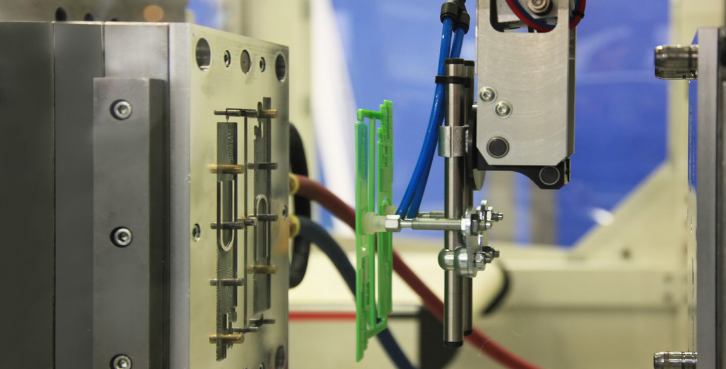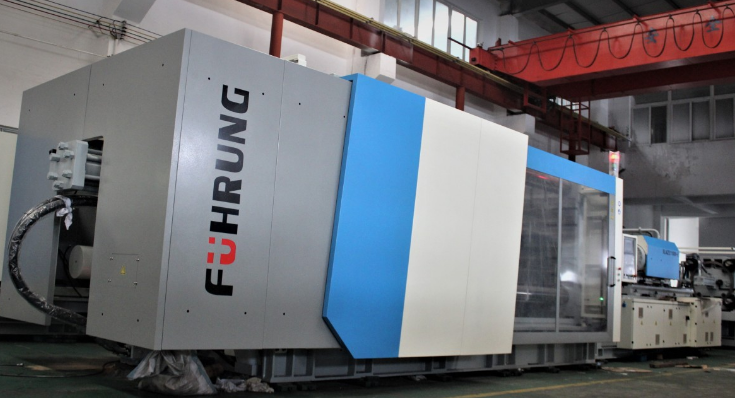The most common injection molding machine is the hydraulic injection molding machine due to its affordability and widespread use.
Overview of Injection Molding Machines
Types of Injection Molding Machines
Injection molding machines are categorized primarily based on how they inject molten material into molds. The most common types are:

Hydraulic Injection Molding Machines: These machines use hydraulic systems to generate the force needed for injection. They are known for their high clamping force, ranging from 5 to 6,000 tons. However, they tend to consume more energy, with power usage around 5 to 75 kW, depending on the machine size.
Electric Injection Molding Machines: Known for their precision and energy efficiency, these machines use electric motors. They have a slightly lower clamping force, typically up to 2,000 tons. Their energy consumption is generally 20-40% lower than hydraulic machines.
Hybrid Injection Molding Machines: Combining the best of hydraulic and electric types, these machines offer high efficiency and precision. They provide clamping forces similar to hydraulic machines but with the energy efficiency of electric models.
Cost Comparison: Electric machines are more expensive, with prices 10-20% higher than hydraulic ones. However, their lower operating costs can offset the initial investment over time.
Historical Development of Molding Machines
The evolution of injection molding machines is a story of technological advancement:
Early 20th Century: The first injection molding machines were simplistic, using basic plunger-type mechanisms. These machines had limited control over pressure and temperature.
Mid-20th Century: The introduction of the reciprocating screw in the 1950s revolutionized injection molding, improving the consistency and quality of molded parts.
Late 20th Century to Present: Recent decades have seen significant advancements, including the development of electric and hybrid machines. Control systems have also evolved, incorporating computerized and AI-driven technologies for precision and efficiency.
Advancements in Material Science: Concurrently, there have been significant improvements in the materials used for machine components, enhancing durability and performance.
For more in-depth information, resources like the Injection Molding Machine Wikipedia page offer valuable insights.
Features of Common Injection Molding Machines
Clamping Force and Machine Size
The clamping force and size of an injection molding machine are critical factors that determine its suitability for specific manufacturing tasks.
Table: Clamping Force and Machine Size
| Machine Type | Clamping Force | Machine Size (Length x Width x Height) | Power Consumption | Cost Range |
|---|---|---|---|---|
| Small Machines | 5 – 200 Tons | 2m x 1.5m x 1.8m (approx.) | 10 – 30 kW | $20,000 – $60,000 |
| Medium Machines | 200 – 500 Tons | 4m x 1.7m x 1.9m (approx.) | 30 – 60 kW | $60,000 – $150,000 |
| Large Machines | 500 – 4000 Tons | 8m x 2.5m x 2.2m (approx.) | 60 – 120 kW | $150,000 – $500,000 |
Note: Larger machines require more space and consume more power but are capable of producing larger parts.
Injection and Pressure Capacity
Injection and pressure capacity are pivotal in determining the quality and precision of the molded parts.
Table: Injection and Pressure Capacity
| Machine Type | Injection Capacity (cm³) | Injection Pressure (MPa) | Material Used | Advantages | Limitations |
|---|---|---|---|---|---|
| Small Machines | 30 – 150 | 30 – 100 | Standard thermoplastics | High precision, suitable for small parts | Limited part size |
| Medium Machines | 150 – 500 | 100 – 150 | Thermoplastics, elastomers | Versatility in part sizes and materials | Higher energy consumption |
| Large Machines | 500 – 2000 | 150 – 200 | All types of plastics | Capable of producing large parts | Higher costs, more space required |
Efficiency and Quality: Larger machines, though more costly, can handle higher pressures and larger injection capacities, making them suitable for a wide range of materials and part sizes.
For more detailed information on injection molding machines, the Injection Molding Machine Wikipedia page provides comprehensive insights into these technologies.
Materials and Components in Common Machines
Standard Materials Used in Machine Construction
Injection molding machines are constructed using a variety of materials, each selected for its specific properties and suitability for different aspects of the machine.
Steel: Widely used for the machine frame and clamping units due to its high strength and durability. The typical lifespan of these steel components can range from 10 to 20 years, depending on maintenance.
Aluminum: Often used for parts that require lighter weight and good thermal conductivity, such as certain components of the injection unit.
Plastics and Polymers: Utilized in non-structural components. They offer cost savings and reduced machine weight, but with a shorter lifespan compared to metal parts.
Key Components of Injection Molding Machines
The functionality of injection molding machines relies heavily on several key components:
Injection Unit: Responsible for melting and injecting the material into the mold. It includes the hopper, barrel, heater, and screw.
Clamping Unit: Provides the force necessary to hold the mold closed during the injection process. It consists of the mold itself, a clamping mechanism, and the machine base.
Control System: A critical component that manages the process parameters like temperature, pressure, and cycle time. Modern machines feature advanced computerized control systems for precision.
Hydraulic System: Used in hydraulic injection molding machines to generate the necessary force for clamping and injection. These systems can have a power range from 5 kW to 75 kW depending on the machine size.
Electric Drive: Found in electric and hybrid machines, providing energy-efficient operation and precise control over the molding process.
Cost and Maintenance Considerations: The cost of these components varies widely, with the control system and hydraulic/electric drives being among the most expensive parts. Regular maintenance is essential to extend the life of these components and ensure efficient operation.
For further details on the materials and components used in injection molding machines, the Injection Molding Machine Wikipedia page offers a wealth of information.
Operating Principles of Popular Injection Molding Machines
Process Cycle of Injection Molding
The process cycle of an injection molding machine is a sequence of events that transforms raw material into a finished part. It consists of several stages:

Material Feeding: Raw material, typically in the form of pellets or granules, is fed into the machine’s hopper.
Melting and Injection: The material is then conveyed to the heated barrel where it melts. The molten plastic is then injected into the mold cavity at pressures ranging typically from 1000 to 20000 psi.
Cooling and Solidification: Inside the mold, the material begins to cool and solidify, forming the shape of the part.
Ejection: After solidification, the mold opens and an ejection mechanism pushes the part out of the mold.
Part Removal and Repeat: The part is removed, and the cycle repeats for the next part.
Cycle Time: The total cycle time can range from a few seconds to minutes, depending on the part size and complexity. Faster cycle times result in higher production rates but may require more advanced machinery.
Control Systems and User Interface
Modern injection molding machines are equipped with sophisticated control systems and user interfaces to manage the entire molding process.
Programmable Logic Controllers (PLC): These are the brains of the machine, allowing precise control over process parameters such as temperature, pressure, and injection speed.
Touchscreen Interfaces: Operators interact with the machine using intuitive touchscreen panels. These interfaces display real-time data, machine status, and allow for easy adjustment of settings.
Software Integration: Advanced machines are often integrated with software for process monitoring, quality control, and data analysis. This integration helps in optimizing the process for efficiency and quality.
Energy Consumption and Efficiency: Modern control systems enhance the energy efficiency of the machine. For example, electric machines with precise control systems can reduce energy consumption by 20-50% compared to older hydraulic models.
For more comprehensive insights into the operation and control of injection molding machines, the Injection Molding Machine Wikipedia page is a valuable resource.




